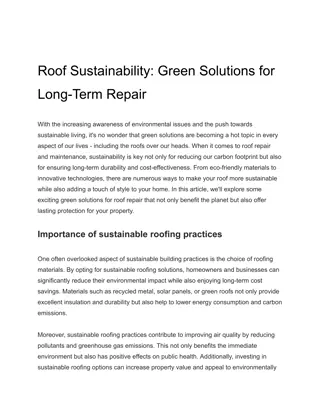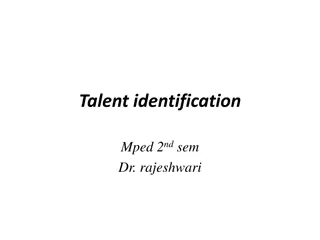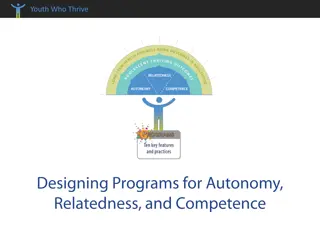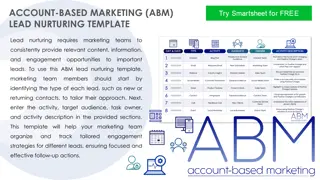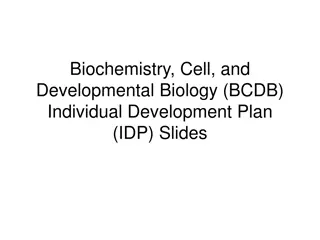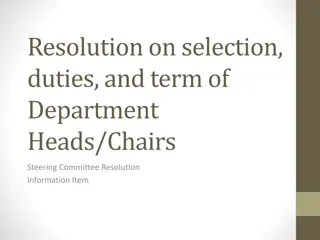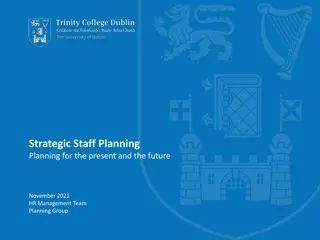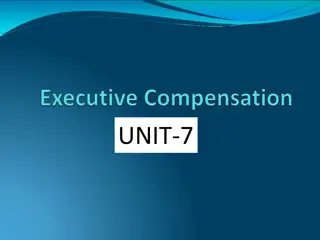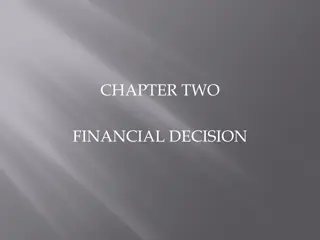Nurturing School Heads for Long-Term Success
School head turnover rates, impact on school effectiveness, strategies to support long-term heads, leadership styles affecting tenure, and the importance of board structures. Recognize the critical stages and factors influencing leadership sustainability in educational institutions.
Download Presentation

Please find below an Image/Link to download the presentation.
The content on the website is provided AS IS for your information and personal use only. It may not be sold, licensed, or shared on other websites without obtaining consent from the author.If you encounter any issues during the download, it is possible that the publisher has removed the file from their server.
You are allowed to download the files provided on this website for personal or commercial use, subject to the condition that they are used lawfully. All files are the property of their respective owners.
The content on the website is provided AS IS for your information and personal use only. It may not be sold, licensed, or shared on other websites without obtaining consent from the author.
E N D
Presentation Transcript
The Longevity of Heads and the Effectiveness of Schools How to Nurture and Support Heads The Impact of Board Structures, Behaviors, and Personalities
Key Issues Long term heads lead to healthier schools Heads and Trustees turn over too quickly Board structure and behavior affect head tenure Leadership styles of heads affect head tenure Head tenure affects faculty morale and growth, school stability, financial health and reputation School boards have not paid much attention to this pattern of memory loss over time Confidential: Intellectual Property of Littleford &Associates
The Sad State of Head Turnover In our experience, , between 70 to 80% of all heads are fired at some point in their careers 30 years ago, most left of their own volition Today s head faces more pressures Today s head is a target and with too many arrows in that target, the head is politically dead Heads need a reservoir of political capital Boards need to help fill that reservoir So do leadership teams Confidential: Intellectual Property of Littleford & Associates
The Beginning and Often the End New Heads must lay low in the weeds Transitions are crucial and take up to three years In years two and three heads are often at risk The third year the head may expect to cross the Rubicon By year 5, the school is beginning to reflect the head s leadership and vision However, a 5 year head often leaves no legacy. Confidential: Intellectual Property of Littleford & Associates
Leadership Styles Drivers are decision makers who may succeed and last long term if they survive the first three to five years Expressives and amiables last longer, but then may be fired or undercut as unresolved issues surface. There are exceptions, of course Analyticals tend to be the survivors, often long term heads. Confidential: Intellectual Property of Littleford & Associates
The Heads Impact Begins after 6 to 8 years Fund raising potential gains momentum The head understands the culture and political realities Stronger board members are attracted to a winning school Faculty respond to leadership and vision Heads know their families K to 12 and can fundraise Confidential: Intellectual Property of Littleford & Associates
There is No Recommended Head Tenure Heads can be effective in year 1 and may be effective still after 30 to 40 years Consultants should not advocate a year specific time frame for heads to leave Head tenure relates to health of the Board, and health and leadership of the head Great legacies are left by long term heads Think Frank Boyden at Deerfield: 67 years! Byron Forbush at Baltimore Friends: 33 years Zach Young at Wesleyan, Atlanta: 25 years Confidential: Intellectual Property of Littleford & Associates
Disappearance of Long Term Heads Long term Trustees and chairs are disappearing School bylaws force the turnover of valuable trustees The result: Long term heads are disappearing Chair term limits of two years are folly; board terms of two three year segments guarantees the loss of institutional memory and usually a short tenure for heads Parent elected boards are the most dangerous but boards made up of mostly appointed parents are also challenging Confidential: Intellectual Property of Littleford & Associates
The Loss of Institutional Memory School mission and stability depend on long serving trustees who hold the mission in trust Long serving trustees select long serving chairs Long serving chairs build lasting partnerships with long serving heads It is the fourth board chair who fires the head 80% of the time. Why? Of Course wily heads know how to manage boards Confidential: Intellectual Property of Littleford & Associates
The COT is the Most Powerful and Important Committee The COT preserves institutional memory. It is the responsibility of the COT to evaluate all trustees and officers regularly. How? The COT creates a healthy board: a mix of parents, alumni, past parents and community leaders The role of the COT: Cultivate a pool of prospects; screen them; invite them; orient them; train them; evaluate them; warn them; if necessary remove them Confidential: Intellectual Property of Littleford & Associates
The Pendulum has Swung Too Far Boards would be better off with longer term limits Term limits are a way to remove board members who might with a more focused COT not be invited to return There should be longer terms for chairs This ASSUMES the COT is doing all 8 of its functions well and we know that is a challenge Confidential: Intellectual Property of Littleford & Associates
Link of Head and Chair The value of long term Chairs Chairs should serve at least three to five years Heads usually cannot survive their fourth board chair Avoid Chairs who want the job too much Recruit board chairs who are committed, compassionate, and have fire in the belly to protect the Head during a crisis Confidential: Intellectual Property of Littleford & Associates
Trustee Service/Longevity of Heads Schools need stability as well as change Trustee turnover can be dangerous as power vacuums develop and are filled by faculty and parents Board members need to think of themselves as Trustees , not directors or governors Board members hold the mission in trust Boards do NOT represent the parents. Boards represent the mission: past/present/future Confidential: Intellectual Property of Littleford & Associates
Board Members May Be Too Involved Frequent Head turnover creates power vacuums filled by trustees Intrusive Boards occur at times of head transition or weakness often including many executive sessions Over-extended boards become exhausted and make poor decisions Too many board committees and/or meetings that are too long signal potential dysfunction Confidential: Intellectual Property of Littleford & Associates
The Frequent Turnover of Heads Creates a Power Vacuum Elementary day schools fire their heads the most Day schools fire their heads more than boarding schools Parent boards fire more than mixed boards Professionals fire more than CEO types Frequent head turnover creates confusion among stakeholders as each head hires teachers who support his/her definition of the mission Confidential: Intellectual Property of Littleford &Associates
Healthy Schools Cultures are Damaged by Head Turnover Parents and teachers engage in the dangerous practice of skipping channels and crossing boundaries Leadership opportunities are lost Legacies are not created The community becomes suspicious Fund raising declines Admissions suffers Alumni have little pride Confidential: Intellectual Property of Littleford & Associates
Long Term Heads Know How to Manage the Board Board size: ideally 16 to 24 (too small is dangerous) Fewer subcommittees are better Education and personnel (HR) committees are usually the most risky (and most schools do not have them) The Board must nurture the head The Head must nurture each board member Heads have as many bosses as there are trustees Wise heads spend 40% of their time on board work Confidential: Intellectual Property of Littleford & Associates
The Power and the Danger of the Head/Chair Partnership 80% of weak boards may be due to poor head-chair partnerships 20% of weak boards may be due to overly close partnerships between head and chair, ie the rest of the board feels left out and alienated Too many heads rely too much on their chairs Heads need real partnerships with every board member Confidential: Intellectual Property of Littleford & Associates
Institutional Memory Again Chairs should stay on the Executive Committee at least one year after serving as Chair Executive Committee members should have the option to be reelected annually Consider Emeriti board members Consider an Advisory Committee, all to provide longer institutional memory Confidential: Intellectual Property of Littleford & Associates
Long Term Heads are NOT Away too Often Long term heads mind the store Long term heads know the constituencies Long term heads know the faculty and their families Long term heads try to stay in touch with the key constituencies and often know the names of the students or most of them It is not superficial to be seen as meeting and greeting kids and families each day Confidential: Intellectual Property of Littleford & Associates
Long Term Heads are Visionaries They are fervent about the mission They speak to their vision frequently Confidential: Intellectual Property of Littleford & Associates
Long Term Heads Have Support Systems Supportive spouses or partners are helpful Boards need to nurture the head s family Boards need to provide timely, safe and appropriate contracts and competitive compensation to heads Boards need to benchmark the marketplace for head compensation annually Boards need to evaluate heads fairly, not using risky or intrusive tools that undermined the position
Long Term Heads Tend to Hire Number Ones Strong heads hire strong staff Strong heads are not reluctant to lose staff to head other schools Strong heads often do leave potential successors to follow them Boards want to know heads are open to hearing criticism and that not all news coming from the Head is good and happy news Confidential: Intellectual Property of Littleford & Associates
Long Term Heads Make Their Management Pattern Clear Long term heads are clear to the faculty about their role as heads and their management style Long term heads are predictable Long term heads are also mysterious Long term heads consult but ultimately make decisions Long term heads learn not to make decisions too quickly as issues sometimes resolve themselves Confidential: Intellectual Property of Littleford & Associates
Long Term Heads Do Not Bend in the Wind They focus on the mission and adhere to it They do not drift by bowing to the latest group of disgruntled constituents To ensure heads DO NOT bend in the wind avoid evaluation tools that make heads defensive, ie reluctant to make future tough decisions Confidential: Intellectual Property of Littleford & Associates
Long Term Heads Hire Faculty Carefully They hire for character and not just skills They hire by balancing the demographics of the faculty to ensure the right mix They hire to ensure faculty support the mission They also nurture their relationships with all teachers but especially the highly regarded faculty core Confidential: Intellectual Property of Littleford & Associates
Long Term Heads Know the Power of the Governance Committee The COT (again) does the following: Cultivates, screens, selects, orients, trains, evaluates, warns and removes trustees Confidential: Intellectual Property of Littleford & Associates
Long Term Heads Usually Know When to Quit Long term heads usually give plenty of notice of their intent to retire or leave Long term heads generally know they have to back off for a year or two after departing Long term heads have enormous political capital and fund raising potential Long term heads are valuable assets, even after retirement Long term heads deserve severance packages Confidential: Intellectual Property of Littleford & Associates
Long Term Heads Are Needed Especially in times of change and conflict They stay longer when Boards are nurturing They perform better when Boards provide a break, a sabbatical, other opportunities to refresh and renew Confidential: Intellectual Property of Littleford & Associates
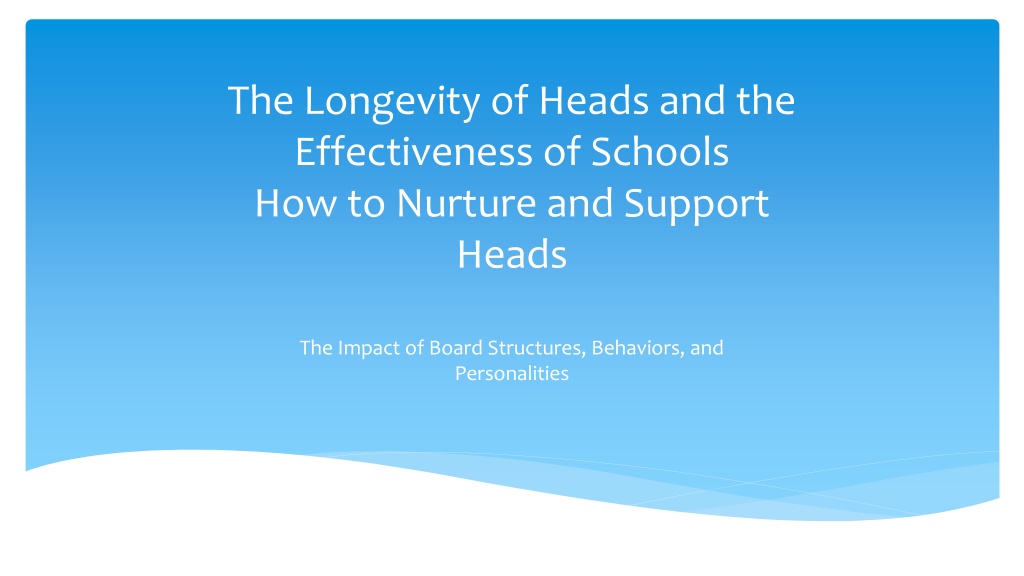
 undefined
undefined






